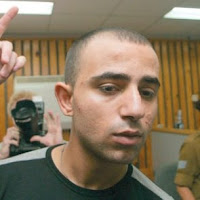“This is a symbolic closure, an exciting historic moment, a tiny repair in the shame of the abandonment of Joseph’s Tomb.”
On Monday, more than a 1,000 people took part in the special prayers for Sukkot at Joseph’s Tomb. They came from all over Israel to the first massive gathering at the site of the Tomb since the destruction of Joseph’s tomb, 10 years ago by angry Arab pillagers, who destroyed the original stone. According to the article, the restoration operation was very complex and took all night to complete; it began on Saturday night and ended Sunday morning. The operation included, a five-stone slab being lowered into the exact location where the original stone had laid in the ancient tomb structure.
The restoration of the Tomb only brought great excitement to the people who attended and some prominent Rabbis took part in the ceremony, which included former French Chief Rabbi, Rabbi Yosef Sitruck. Soldiers took place in the ceremony and “read from the book of Tehilim (Psalms), many of them with tears of excitement in their eyes.” According to the article, during Sukkot, the ushpizin prayer is recited. This prayer symbolizes the welcoming of 7 guests, one for each day of the holiday: Abraham, Isaac, Jacob, Moses, Aaron, David, and Joseph. The significance of Joseph’s tomb is that the prayers took place on the day of Sukkot. This is because according to tradition, Joseph comes and visits the Sukkah, which is, for the people who attended, Joseph’s Tomb.
Regional Council Mayor Gershon Mesika thanked IDF's Samaria Brigade and Civil Administration for their cooperation and assistance in the restoration efforts, but according to the article, he went on to say that this excitement is also mixed with disgrace due to the nation’s abandonment of the tomb 10 years prior. He even goes on to state that he urges the Israeli government to make amends and “allow the Jewish stay at Joseph's Tomb, which was anchored even in the Oslo Accords, in which it was determined that Joseph's Tomb will remain under full Israeli control.” The article even mentions MK Hotovely, an Israeli politician and a doctorate student at the Faculty of Law in Tel Aviv University, says that she believes that the Jews should be allowed to pray at Joseph’s tomb regularly.
Joseph’s Tomb is highly significant in Yom Kippur and according to the article, even before the Tomb was restored, Thursday, September23, hundreds of people gathered in the Samaria community of Mitzpe Yosef, which actually overlooks the Tomb. The ceremony focused primarily around the writing of a Sefer Torah, which organizers believes will eventually be placed inside the Tomb once Israel has a permanent border. The ceremony also celebrated the announcement that the coming year will be known as the year of Joseph’s Tomb and the year will include educational and public activities, as well as many other special events.
Through observation, the author does not share his point of view on the matter, especially on how he feels about the abandonment of the Tomb before now. He only states what happened and quotes people who have control in the government in some way. Whether or not the author expresses his own point of view, I think that it would have been better if he would have shared some of the views citizens that either attended or not and how this historic site makes them feel. This would make the article a lot more approachable and possibly make the reader feel some type of emotion because of this historic event. It is very obvious that this is a reliable source. He does not present his objective opinion on the matter and therefore only states the facts as to what took place. How more reliable can that be? The reader isn’t thrown into the mind of the author and I find that really reliable. He also has been writing for the Israel National News: Arutz Sheva for a while now. After doing some research on the author, he has been writing on Israel for while now and must know his stuff.


